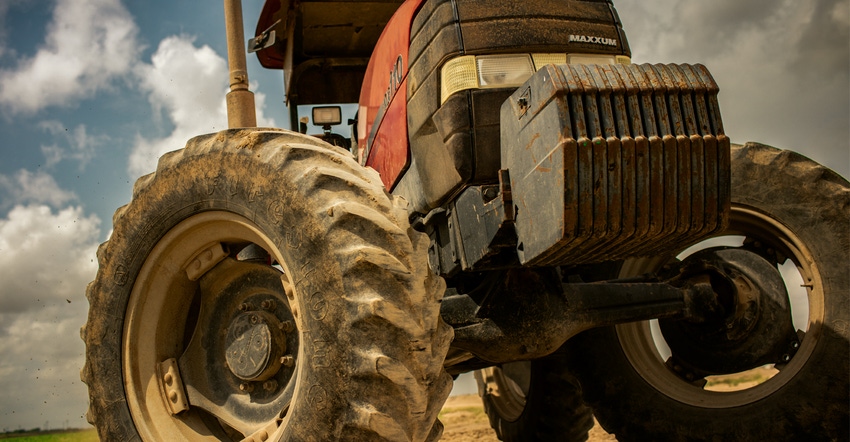November 5, 2021

The farmer sitting with a group recently tells the story of his need for a new tractor tire, but since he's buying one, he wants to replace all four. Trouble is, he's been able to get three. Stories like that are more common these days as tire supplies are tight, with demand rising. What do those tight supplies mean for your farm? A need to take special care this winter.
"When we're looking at using tractors on frozen soils to feed cattle with our loaders, we have to have a good plan to get out to the cattle," says Brad Harris, Firestone field engineer. "We don't want to be running over large frozen objects like dirt clods or ruts that could damage those tires."
If you're transporting feed from hay barn to pasture this winter, clearing a smooth path could be time well spent. Those frozen clods, and plant debris, are more like needles and sharp edges gunning for your tires.
Add in that you may be hauling an 1,800-pound bale on a spear at the front of the tractor, and you're compounding the risk. "When we get those point loads on frozen ground, it's like running over a great big boulder — and that could cause rapid air loss, and you're stuck in the field."
Another risk in frozen ground is crop residue. If you're hauling material to the field this winter — whether it’s manure for later incorporation, or you're picking up stalk bales that you let sit after harvest — that crop residue is going to be sharp. Harris note that cornstalks are already tough on tires; in frozen conditions, the risks get higher.
Southern areas need caution, too
"In the South you get more wet conditions, and you want to make sure you have the proper inflation in those tires just like in the North," Harris says.
He sees things that many farmers may not know about. In those wetter conditions, if you enter an area where there is brush and shrub material, the wet conditions can act as a kind of lubricant for that material. It can slide right in.
"When we go out and we inspect tires, and we have to cut them to see what they're doing, we always just use Windex and some water, and that makes it easier to cut. It's the same principle in wet conditions," Harris says.
Downtime calculator
The cost of a machine being down isn't easy to figure out, but Firestone has done the math with its downtime calculator. Recently, the company updated it to roll in higher crop prices and updated the national average yield.
"We start that back in the 2017 time frame, and we just wanted to look at what it cost if we're in that optimal planting window in the spring, and we have a tire go down, and you lose yield because of that," Harris says. "We calculated that it could cause a 4% yield drag for that delayed planting."
When the company started posting that number, it calculated the cost at $571 per lost hour of work, but for 2020 the number rose to $681 — which is nearly a 20% increase in just four years. The answer? Downtime can be expensive.
The calculation is based on a 16-row planter planting in 30-inch rows at 5 mph with a field efficiency of 80%. The price of corn was averaged to be $4 per bushel, and the yield was taken at the 2020 USDA average of 175.8 bushels. Yield loss from delayed planting was taken from Pioneer's Outcome Effects on Corn Yield Study.
The number may sound high to some, but consider the lost time, its impact on yield and other factors.
The supply situation
Harris' warning about winter conditions and their threat to tires has more impact this year with supplies tight. Three major farm tire makers are in Iowa, and each is having difficulty keeping up with demand.
"We saw sales increase earlier this year, and it never let up," he says. "Part of that is that some manufacturers have tires that come from overseas, and those tires are not entering the market, creating a bigger void."
International suppliers' inability to fill U.S. domestic needs puts pressure on existing capacity, and the result is a shortage of farm tires. How that plays out remains to be seen.
For this winter, a little extra care with those tires can really pay off.
About the Author(s)
You May Also Like






